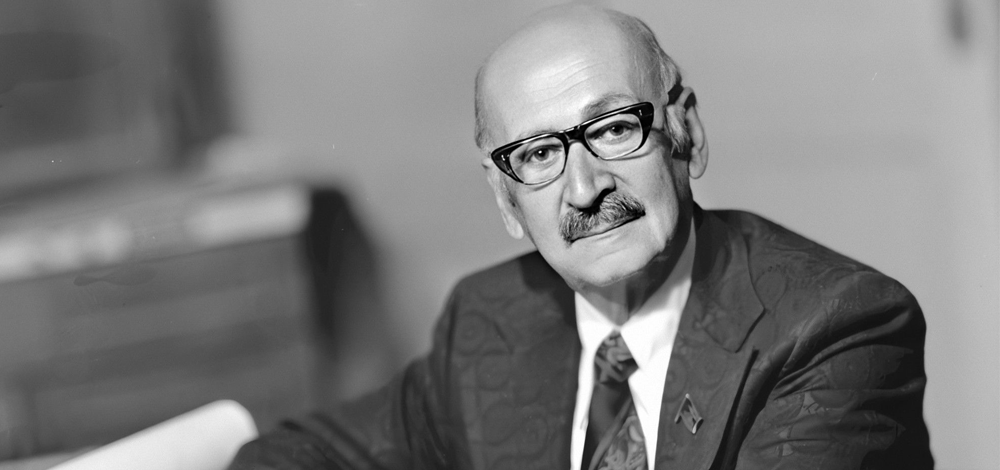THE LEGEND OF THE CENTURY
Mikayil Useynov was a phenomenon in the world of architecture. His works are unique, his opinions are competent and his taste is impeccable. I am sure that the future generations will find even in centuries from now that nobody influences the outlook of Baku of our age more than this extraordinarily modest and talented man did. It was him who managed to make the Bakuvi architecture famous leaving behind him the monuments of architecture that quickly became the best sights of the capital of Azerbaijan.

WHO IS HE?
A son of the wealthy intelligentsia man Alesker Useynov. He was born in 1905. We know what the life of a child born into a wealthy bourgeois family of Baku in the early 20th century was like: music classes, foreign language studies and walks with the old Bonne. The father did all to provide for spiritual development of his son who fell in love with the arts very soon. Mikayil’s mother promoted his interest in drawing and sculpture. Mikayil was a sickly boy and he spend a lot of time in his room making toy-houses of plasticine and bricks. And all of fantastic shapes. The construction went on boisterously in Baku in those years. The family legend has it that he would spend hours in front of construction sites and emerging buildings during his walks with Bonne. He watched the shapeless heaps of stone blocks and bricks become arches, cornices, ornamentation or caryatids thanks to the craft of masons.
THE BEGINNING

At the age of six, Mikayil joined Baku Real College famous for the highest standards of secondary education. He then went to the 11th rank school where he met his coeval Sadikh Dadashev and the two boys became friends. Having finished school, the friends entered the recently opened architecture studies department of the Azerbaijan Polytechnic. The teachers could not but notice those students who spent all of their spare time in the drawing classes, by the drawing-boards or scrutinizing various architectural details in the library.
FAME
The friends became well-known when they were fourth-year students: they took part in an open contest for the design of the Nizami Monument and won the first prize. This happened in 1926. The gifted graduates were retained at the architecture design department; however, practice was their calling and proved eventually to be the business of their lives.
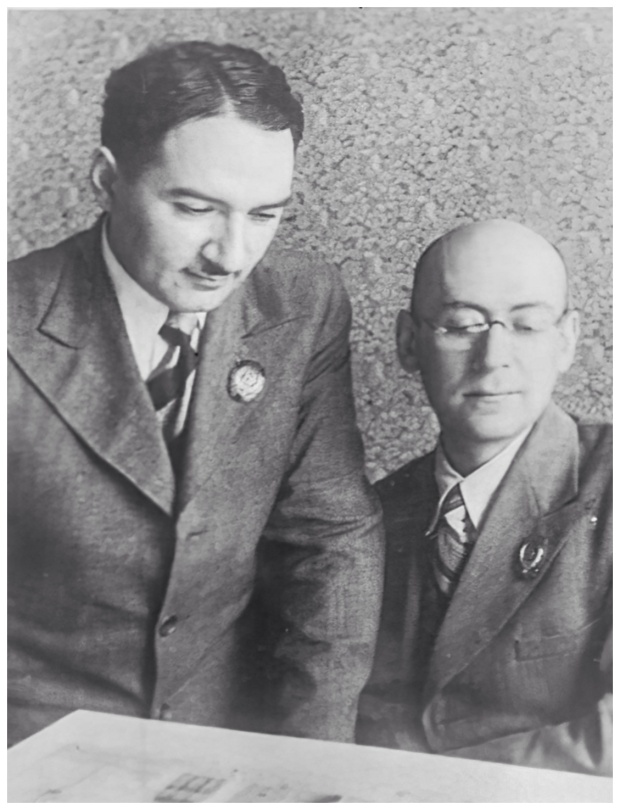
Azerbaijan National Library named after M. F. Akhundov was designed by Useynov right after the death of his friend Dadashev in 1948. The construction was completed in 1960.

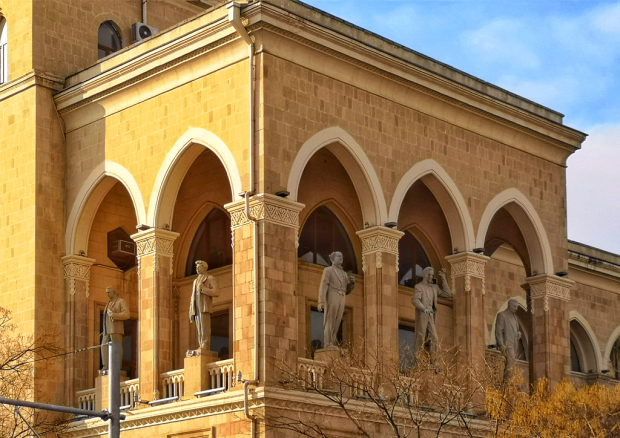
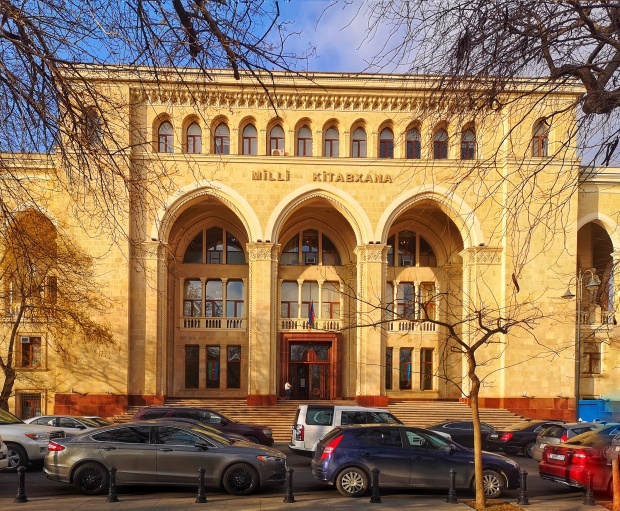
THE NEW EPOCH
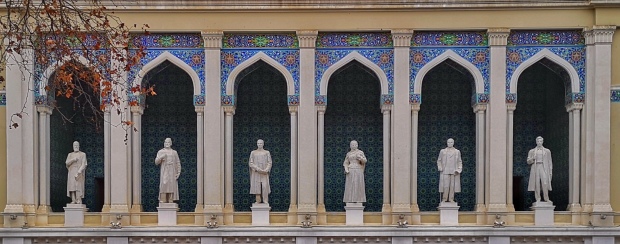
A new epoch began in the Azerbaijani architecture in the 1930s and the architects who started it were Mikayil Useynov and Sadikh Dadashev. They tore clichés to bits, they eliminated routine and they skinned the hackneyed truths alive. They attacked the faceless avant-garde from the much unexpected directions and combined its elements with national traditions. Each of their work, be it a conservatoire, a school (No23, by the way), a maternity hospital in Bailovo, the Nizami Museum or former Council of Ministers Building, the Nizami Cinema, the building of the House of Actors et cetera – and each inauguration – proved to be quite an event in the social life of Baku.

Residence for Workers of “Buzovnaneft” 
Residence for Scientists 
Residence for Scientists 
Nizami Cinema

AFTER THE DEATH OF A FRIEND
Sadikh Dadashev suddenly died in 1946. He had been more than just a friend and a co-author to Mikayil. Unable to bear the loss, he departed from active designing for some time. He tried to plunge himself in oblivion by studying the history of arts, travelling and taking part in public affairs. It was very difficult for him to come to after the departure of his friend.
ACTIVITY WISH
His works were his saviour. It is indeed surprising how much he managed to do in his long life. His work reflected all aspects and nuances of the progress of the Azerbaijani architecture of the last century: the break-through to the avant-garde renovation of the 1920s, the ethnic 1930s, the flourish of architectural forms in the years that followed the end of WWII, the scarcity of the geometric solutions of the 1960s and 1970s which bore the stamp of the total industrialisation… lastly, in the 1980s, he revisited the ethnic elements but at a different level of perception of the relationship between the new and the historic cultural traditions.
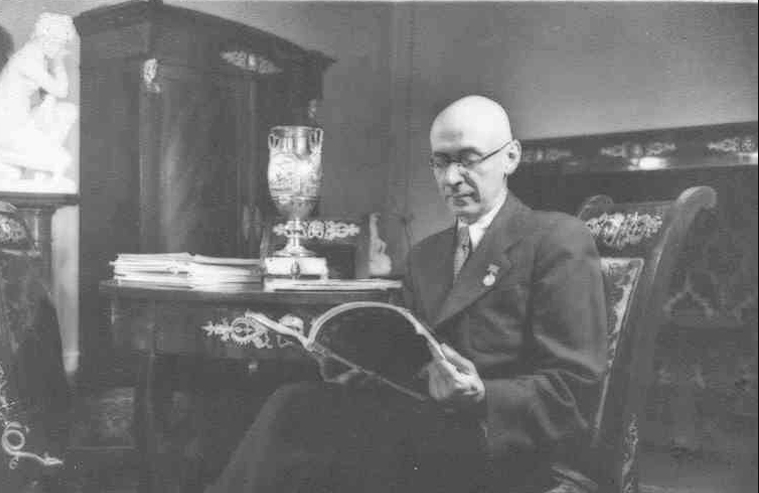
Speaking of his latest works, one should mention the unparalleled design of the Azadlig Square and the all the buildings that run along the Sea Boulevard setting the new standard of elite housing in Baku. Those buildings were and are remarkable for the architectural implementation, original flat planning and splendid sea-front outlook.
WHAT HAPPENED?
Mikayil Useynov liked the sea. He was a splendid swimmer. He used to spend summers by the sea and was bathing for two or three hours a day. He had his last swimming heat when aged 87 – a week ahead of his death. His friends still remember many jolly stories about his long-distance swims. Once, he ruffled the people on the beach in Sochi: he left his clothes on the sand, strode into the sea and disappeared… He was not back after fifteen minutes, after half-and-hour and after one hour… The rain began. The people who had seen him swim away raised the alarm. The rescue team rushed to search for him but could not find him for longer than one hour. Suddenly, his head popped up in the distance. Lastly, the man approached the coast and strode out of the water asking “What happened?”

THE HOUSE ON THE SEA-FRONT
He lived next to the funicular on the Seaside Boulevard – in the house he designed himself and in the flat which he made into a decoration, friendship and eternal youth masterpiece. By the way, the author of this article talked to the maestro in the last years of his life and many memories are personal therefore. The architect spent all his life lonely. Was his life cloudless? Of course not. He was often surrounded by intrigues and hearsay; those who envied him and his rivals victimised him forever. However, he never was rude to the rude and he never tried to rally his many supporters to defend him; he never even took the trouble of proving that he was right when he was right. He would go to the Seaside, or retreat to his books, music, the great Frenchmen whom he loved, his rate paintings and the beautiful things with which he liked to surround himself. And he kept on working, ‘And artist must live while he is alive, while the glory can come posthumous’, he used to say.

NOTE: This article is originally published by Nadekda Ismaylova on “World of Azerbaijani” Journal.
